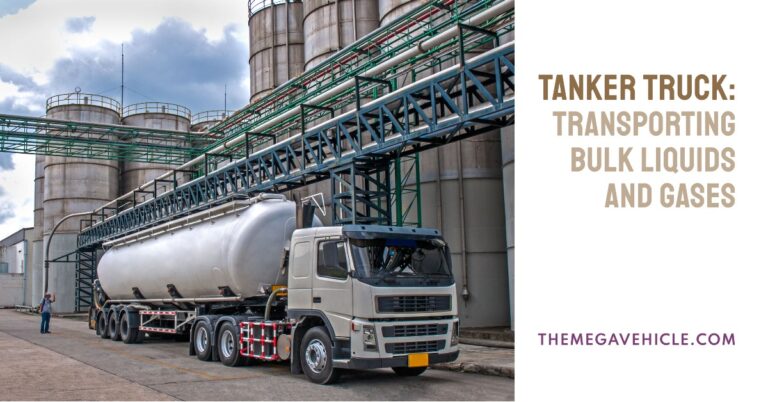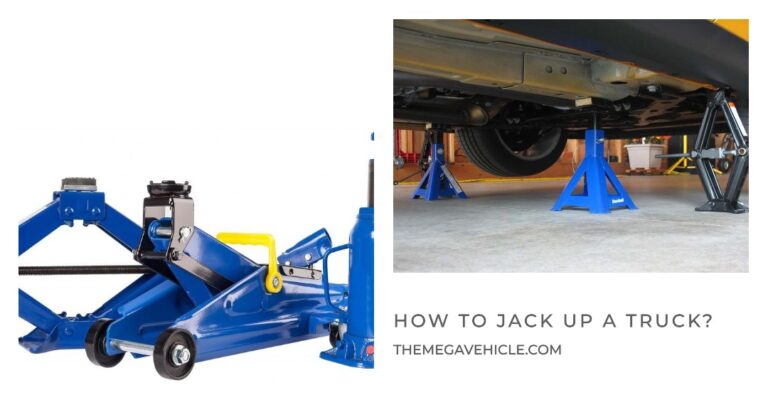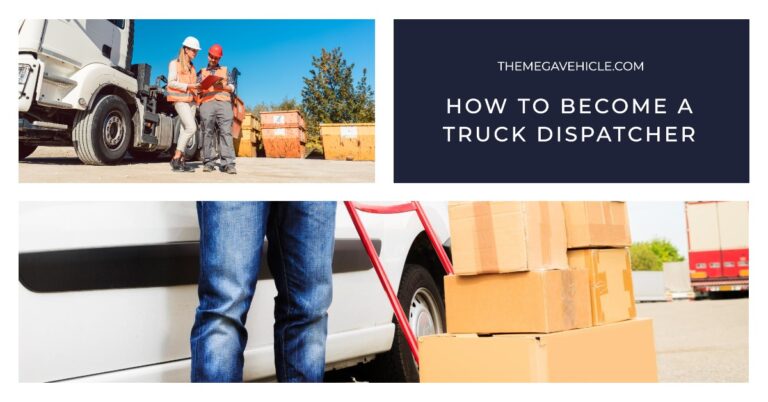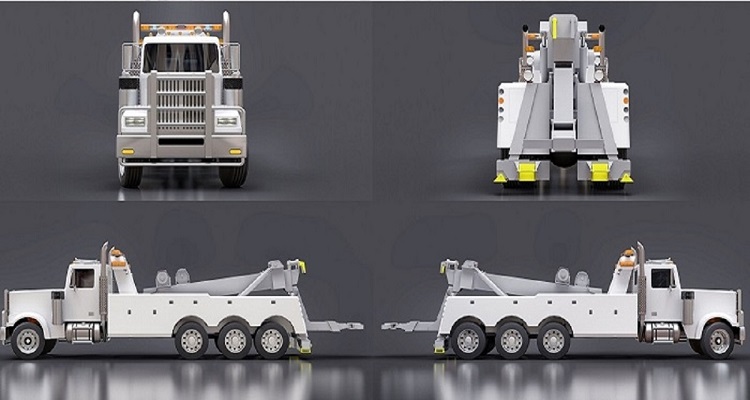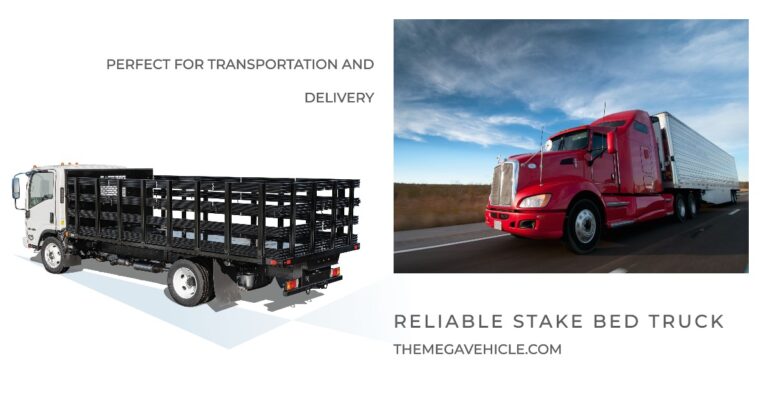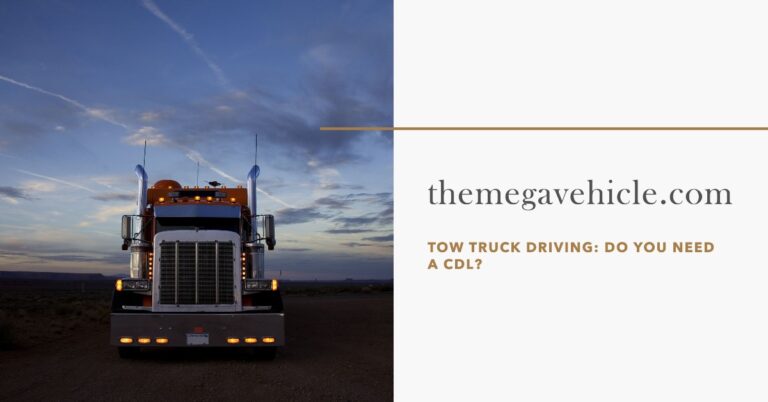Bobtail Truck: The Nimble Workhorse of the Trucking Industry
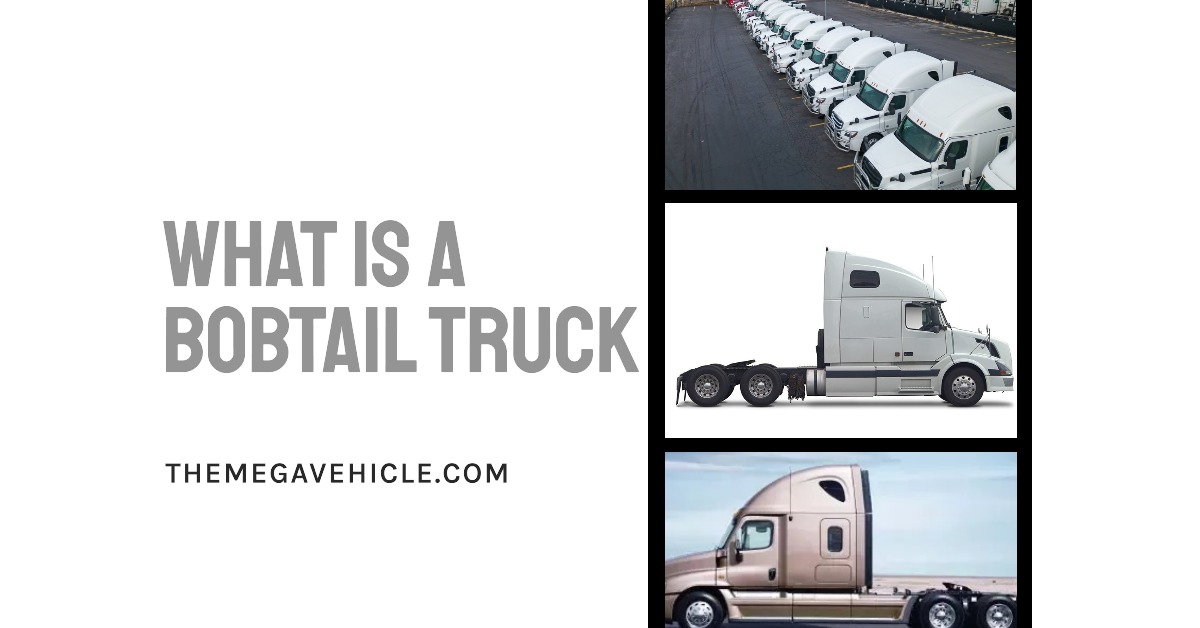
I. Exploring the Bobtail Truck: The Lone Wolf of the Roads
Have you ever seen a hulking semi-truck cruising down the highway, but something seems…off? No hulking cargo box trailing behind? That, my friend, is a bobtail truck, the lone wolf of the trucking world. Unlike its full-fledged counterparts, the bobtail operates solo, the tractor unit stripped bare, revealing its muscular chassis and powerful engine.
While it might not be the most common sight on the road, the bobtail plays a crucial role in the intricate dance of goods delivery. Think of it as the nimble counterpart to the mighty tractor-trailer.
1. The Tractor-Trailer: Road King
The classic tractor-trailer combination reigns supreme on the highways, a hulking behemoth hauling colossal cargo across vast distances. Imagine a powerful tractor unit hitched to a trailer stretching longer than two football fields – that’s the image that dominates our minds when we picture trucks. Its sheer capacity makes it the undisputed king of long-distance haulage, transporting everything from furniture to electronics, keeping the wheels of commerce turning.
2. Bobtail Truck: The Master of Maneuvering
But where the tractor-trailer thrives on open roads, the bobtail truck shines in the urban jungle. Shed of its trailer, it sheds its bulk, transforming into a lean, mean, maneuvering machine. Tight city streets, winding construction sites, and narrow alleyways – these are the bobtail’s domain. Its shorter wheelbase and lighter weight make it a master of navigating tight spaces, delivering goods where the giants simply can’t reach.
3. More Than Just Delivery
But the bobtail’s versatility extends beyond mere delivery. Imagine a flatbed bobtail loaded with construction materials, a vital link in building our cities. Picture a tow truck outfitted as a bobtail, rescuing stranded vehicles, keeping the traffic flowing. And let’s not forget the vital role bobtails play in maintenance and repairs, their agility allowing them to reach and service even the most inaccessible trucks.
4. The Bobtail: A Silent Partner in Progress
While the bobtail might not grab the same headlines as its trailer-toting brethren, its contribution to the trucking industry is undeniable. It’s the unsung hero, the silent partner in progress, ensuring goods reach their destinations, construction sites stay supplied, and even broken-down trucks get back on their feet. So next time you see a bobtail cruising down the road, remember, it’s more than just a truck; it’s a symbol of adaptability, precision, and the unsung heroes who keep the wheels of our world turning.
II. Why Use a Bobtail Truck?
The bobtail truck might be missing its trailer, but it’s certainly not missing its purpose. This stripped-down powerhouse boasts a surprising array of applications, making it an invaluable asset in the trucking world. Let’s delve into the toolbox of the bobtail and explore why it’s more than just a trailer-less truck:
1. Urban Delivery Ace
Imagine bustling city streets, narrow alleys, and quaint neighborhoods. These are no match for the hulking tractor-trailer, but the bobtail thrives here. Its compact size and agility make it a delivery champion in tight spaces. Whether it’s restocking a city bodega, delivering fresh produce to a restaurant, or bringing furniture to a downtown apartment, the bobtail truck navigates these urban labyrinths with ease, ensuring timely deliveries without compromising on maneuverability.
2. Towing & Recovery Hero
Seen a flatbed bobtail decked out with flashing lights and tow hooks? That’s your friendly neighborhood breakdown buddy. When a car gets stranded or needs a lift, the bobtail’s towing prowess comes into play. Its powerful engine and sturdy frame can handle a variety of vehicles, from motorcycles to small trucks, providing quick and efficient recovery services, keeping traffic flowing and drivers safe.
3. The Mobile Mechanic
Think of the bobtail as a rolling toolbox. Equipped with specialized tools and equipment, it transforms into a mobile repair unit, reaching trucks in remote locations or at construction sites. Imagine a bobtail pulling up to a stalled truck, its technicians emerging with the tools and expertise to get the engine roaring again. This on-site repair capability saves time, keeps trucks on schedule, and minimizes downtime, ensuring a smooth flow of operations.
4. Beyond the Basics
The bobtail’s versatility extends beyond these core applications. It can be a platform for street cleaning, equipped with sweeping brushes and water tanks. It can be a mobile billboard, displaying advertising messages as it cruises through the city. And let’s not forget its role in disaster relief, delivering essential supplies and equipment to affected areas when larger vehicles struggle to reach.
5. The Bobtail’s Value Proposition
In a nutshell, the bobtail offers a unique combination of:
- Maneuverability: Its compact size tackles tight spaces where larger trucks can’t go.
- Versatility: From delivery to towing to repairs, it adapts to diverse needs.
- Efficiency: Its agility and speed save time and keep operations running smoothly.
- Accessibility: It reaches remote locations and navigates congested areas.
So, the next time you see a bobtail cruising down the road, remember, it’s more than just a truck with a missing trailer. It’s a versatile workhorse, a silent guardian of urban deliveries, a tow truck hero, and a mobile repair shop all rolled into one. The bobtail is a testament to the power of adaptability and precision, proving that sometimes, less is truly more.
Also Read: What is a box truck? Tips for Starting a Box Truck Business
III. Weighing the Scales: Bobtail Trucks – Advantages and Disadvantages
The bobtail truck, with its stripped-down charm, presents a unique proposition in the trucking world. While it may lack the hulking presence of its trailer-attached brethren, it offers a distinct set of advantages and disadvantages that make it a valuable asset for specific tasks. Let’s delve into both sides of the coin to understand where the bobtail truly shines and where it might need a helping hand.
Advantages:
- Maneuverability Master: The bobtail’s greatest strength lies in its agility. Its shorter wheelbase and lack of a trailer make it a champion in tight spaces. Navigating narrow city streets, construction zones, and winding alleys is a breeze for this nimble truck, making it ideal for urban deliveries, on-site repairs, and even street cleaning.
- Versatility Unbound: Unlike the tractor-trailer, whose purpose is solely hauling cargo, the bobtail’s potential stretches far beyond. It can be equipped for towing, mobile repairs, roadside assistance, and even disaster relief, offering a wider range of services than its larger counterpart.
- Cost-Conscious Choice: Operating a bobtail is generally cheaper than running a tractor-trailer. Lower fuel consumption due to its lighter weight and reduced maintenance costs thanks to a simpler engine and fewer components make it a budget-friendly option for specific tasks.
Disadvantages:
- Stability Concerns: The bobtail’s shorter wheelbase and higher center of gravity make it more susceptible to rollovers, especially in sharp turns or uneven terrain. This safety concern needs to be factored into its operation, particularly when carrying heavy loads.
- Cargo Capacity Constrained: Compared to the vast cargo space of a tractor-trailer, the bobtail’s capacity is significantly limited. This makes it unsuitable for long-distance haulage or transporting large volumes of goods.
- Fuel Efficiency Trade-Off: While generally more fuel-efficient than a fully loaded tractor-trailer, bobtails can be less efficient than their trailer-less counterparts when carrying heavy loads. This is due to the increased engine strain and the need for more frequent braking and acceleration in tight spaces.
Finding the Right Fit
Ultimately, the decision to utilize a bobtail depends on the specific needs of the task at hand. If maneuverability, versatility, and cost-efficiency are paramount, the bobtail shines. However, if cargo capacity, stability, and fuel efficiency are critical, a tractor-trailer might be the better choice.
By understanding both the advantages and disadvantages of the bobtail truck, businesses can make informed decisions about when to unleash its agility and when to rely on the brute strength of the tractor-trailer. Remember, the right tool for the job is key to smooth operations and efficient deliveries, and the bobtail, with its unique set of strengths and weaknesses, deserves a place in the trucking toolbox.
IV. Taming the Agile Beast: Safety Precautions for Bobtail Trucks
While the bobtail truck’s nimbleness makes it a master of tight spaces, its unique characteristics also present distinct safety challenges. Understanding these dangers and implementing proper driving practices is crucial for keeping both the driver and others on the road safe. Let’s delve into the potential hazards and equip ourselves with the knowledge to navigate the bobtail with confidence.
1. The Tipping Point
One of the bobtail’s greatest strengths, its agility, can also be its Achilles’ heel. Its shorter wheelbase and higher center of gravity make it more prone to rollovers, especially during sharp turns or on uneven terrain. Sudden maneuvers or excessive speeding can easily tip the balance, potentially leading to devastating consequences.
2. Stopping Power Parity
Unlike their trailer-laden counterparts, bobtail trucks have significantly less stopping power. This can be a recipe for disaster in emergency situations, as it takes them longer to come to a complete stop. Tailgating or disregarding safe following distances can quickly turn into a rear-end collision, making cautious and responsible driving paramount.
3. Weathering the Storm
Adverse weather conditions further amplify the bobtail’s safety challenges. Rain, snow, and ice can significantly reduce traction, making it harder to control the vehicle, especially during turns or braking. Strong winds can also affect the bobtail’s stability, potentially pushing it off course. Increased awareness and adaptation to weather conditions are essential for safe operation.
V. Steering the Course to Safety: Tips for Safe Driving of Bobtail Trucks
Fortunately, several key driving practices can mitigate the safety risks associated with bobtail trucks:
- Smooth Operator: Avoid sudden stops and turns, opting for gradual and controlled maneuvers. This minimizes the risk of rollovers and loss of control.
- Distance Makes the Difference: Maintain a safe following distance from other vehicles, allowing ample time for stopping or reacting to sudden changes in traffic.
- Weather Watch: Be extra cautious in bad weather conditions. Reduce speed, increase following distance, and avoid unnecessary maneuvers to ensure safe driving.
- Lane Change Etiquette: Signal your intentions well in advance and execute lane changes smoothly, ensuring clear visibility and minimizing the risk of accidents.
By incorporating these safety tips into their driving habits, bobtail operators can navigate the roads with confidence, ensuring their own and others’ well-being. Remember, safety is not just a choice; it’s a responsibility. By understanding the bobtail’s quirks and implementing proper driving practices, we can transform this agile beast into a safe and reliable partner on the road.
VI. Navigating the Rules of the Road: Regulations for Bobtail Trucks
While the bobtail truck might appear as a lone wolf on the highways, it’s not exempt from the laws that govern the trucking industry. Understanding and complying with the regulations surrounding bobtail operations is crucial for ensuring safety, legality, and business continuity. Let’s dive into the key rules and requirements that keep these nimble trucks on the right side of the law.
1. License to Bobtail
- Commercial Driver’s License (CDL): Just like their trailer-attached counterparts, bobtail trucks require drivers to hold a valid CDL. This ensures that the individuals behind the wheel possess the necessary skills and knowledge to operate these powerful vehicles safely and responsibly.
2. Registration and Insurance
- Proof of Registration: Bobtail trucks must be properly registered with the relevant transportation authorities, displaying valid license plates and registration documents. This ensures that the vehicle is legally authorized to operate on public roads.
- Adequate Insurance: Comprehensive insurance coverage is mandatory for bobtail trucks, protecting against potential damages or liabilities arising from accidents or incidents. This includes coverage for both property damage and bodily injury.
3. Federal, State, and Local Adherence
- Compliance with All Applicable Laws: Bobtail truck drivers must meticulously abide by all federal, state, and local laws governing commercial vehicles. These regulations cover a wide range of aspects, including:
- Hours of service (HOS) regulations, which limit the number of hours a driver can operate a commercial vehicle without rest
- Speed limits
- Weight restrictions
- Hazardous material transportation rules
- Traffic laws specific to commercial vehicles
4. Special Permits for Specific Scenarios
- Beyond the Standard: In certain cases, bobtail trucks may require additional permits or licenses to operate within specific areas or on particular roads. These could include:
- Oversize or overweight load permits
- Permits for transporting hazardous materials
- Access permits for restricted zones or city centers
- Special permits for operating during certain hours or events
5. Staying Informed and Compliant
It’s crucial for both drivers and trucking companies to stay updated on the evolving regulations that govern bobtail operations. Consulting with transportation authorities, industry associations, or legal professionals can provide clarity on specific requirements and ensure compliance. By adhering to these rules and guidelines, bobtail trucks can continue to play their vital role in the trucking industry while maintaining safety and legality on the roads.
Remember, operating a bobtail truck is a privilege, not a right. By respecting the regulations and practicing responsible driving, we can ensure that these nimble workhorses continue to navigate the roads efficiently and safely, contributing to the smooth flow of goods and services that keep our communities thriving.
Also Read: What is a Bucket Truck? Understanding the Versatile Vehicle
VII. The Bobtail Truck: A Jack of All Trades, Master of Maneuverability
As you’ve eloquently stated, the bobtail truck, despite its stripped-down appearance, holds immense significance in the intricate ballet of the trucking industry. Let’s weave a compelling conclusion that encapsulates the bobtail’s essential role and ponders its future on the road.
1. The Indispensable Bobtail
While the hulking tractor-trailer dominates the open highways, the bobtail thrives where giants stumble. Its agility and nimbleness make it the urban delivery warrior, navigating tight city streets and delivering goods to the heart of bustling communities. It’s the tow truck hero, rescuing stranded vehicles and keeping traffic flowing. It’s the on-site repair partner, ensuring trucks stay operational and deliveries uninterrupted. The bobtail is more than just a truck; it’s a versatile tool that fills the gaps where traditional trailers can’t reach, ensuring the smooth operation of our interconnected world.
2. A Future of Agility
The future of the bobtail truck, like the roads themselves, is ever-evolving. With the rise of e-commerce and the increasing demand for efficient last-mile delivery, the bobtail’s adaptability and maneuverability become even more crucial. Autonomous driving technology may transform its operation, but its core strengths – agility, versatility, and cost-effectiveness – are likely to remain its guiding stars.
Imagine a future where bobtail fleets, equipped with advanced technology, navigate congested cityscapes with precision, delivering packages directly to doorsteps. Picture them seamlessly integrating with green energy solutions, contributing to a more sustainable transportation ecosystem. The bobtail’s future is not merely about survival; it’s about evolving, adapting, and continuing to play its vital role in keeping our wheels spinning and our communities connected.
In Conclusion
The bobtail truck, with its stripped-down charm and unexpected versatility, is a testament to the power of adaptability and precision in the trucking world. It’s not just a vehicle; it’s a symbol of innovation, resourcefulness, and the unsung heroes who keep the wheels of commerce turning. As we look towards the future of transportation, the bobtail stands poised to continue its journey, navigating new roads and evolving alongside the ever-changing landscape of the trucking industry.

